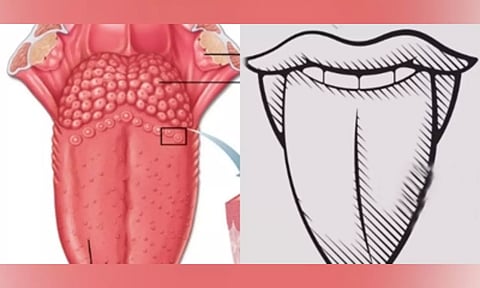

TOKYO: US scientists have found evidence of a sixth basic taste -- umami -- in addition to sweet, sour, salty and bitter, eight decades after Japanese scientist Kikunae Ikeda first proposed it in the early 1900s.
Researchers at the University of Southern California-Dornsife College of Letters, Arts and Sciences have found that the tongue responds to ammonium chloride through the same protein receptor that signals sour taste.
Emily Liman, Professor of biological sciences speculates that the ability to taste ammonium chloride might have evolved to help organisms avoid eating harmful biological substances that have high concentrations of ammonium.
"Ammonium is found in waste products -- think of fertiliser -- and is somewhat toxic, so it makes sense we evolved taste mechanisms to detect it,” she said, in the paper published in the journal Nature Communications.
In some northern European countries, salt licorice has been a popular candy at least since the early 20th century. The treat counts among its ingredients salmiak salt, or ammonium chloride.
Scientists have for decades recognised that the tongue responds strongly to ammonium chloride. However, despite extensive research, the specific tongue receptors that react to it remained elusive.
In recent years, the scientists have uncovered the protein responsible for detecting sour taste. That protein, called OTOP1, sits within cell membranes and forms a channel for hydrogen ions moving into the cell.
Hydrogen ions are the key component of acids, and as foodies everywhere know, the tongue senses acid as sour. That's why lemonade (rich in citric and ascorbic acids), vinegar (acetic acid) and other acidic foods impart a zing of tartness when they hit the tongue.
They introduced the Otop1 gene into lab-grown human cells so the cells produce the OTOP1 receptor protein. They then exposed the cells to acid or to ammonium chloride and measured the responses.
"We saw that ammonium chloride is a really strong activator of the OTOP1 channel," Liman said. "It activates as well or better than acids."
Ammonium chloride gives off small amounts of ammonia, which moves inside the cell and raises the pH, making it more alkaline, which means fewer hydrogen ions.
Further, the team turned to a technique that measures electrical conductivity, simulating how nerves conduct a signal.
Using taste bud cells from normal mice and from mice the lab previously genetically engineered to not produce OTOP1, they measured how well the taste cells generated electrical responses called action potentials when ammonium chloride is introduced.
Taste bud cells from wildtype mice showed a sharp increase in action potentials after ammonium chloride was added while taste bud cells from the mice lacking OTOP1 failed to respond to the salt. This confirmed their hypothesis that OTOP1 responds to the salt, generating an electrical signal in taste bud cells.
Then the team went one step further and examined how mice react when given a choice to drink either plain water or water laced with ammonium chloride. For these experiments, they disabled the bitter cells that also contribute to the taste of ammonium chloride.
Mice with a functional OTOP1 protein found the taste of ammonium chloride unappealing and did not drink the solution, while mice lacking the OTOP1 protein did not mind the alkaline salt, even at very high concentrations.